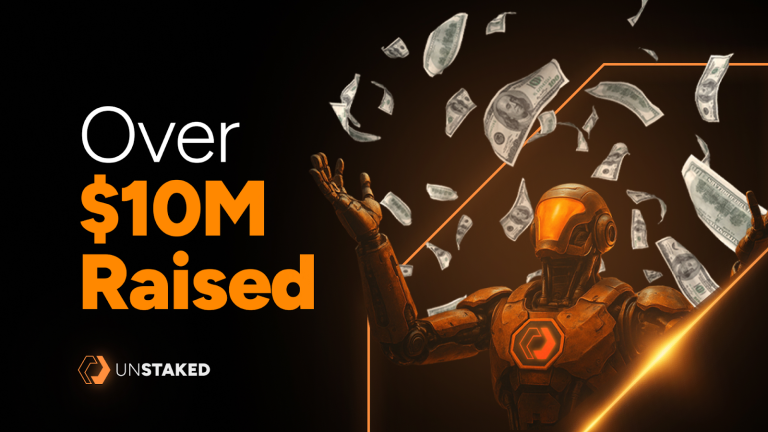BlockDAG’s Testnet Launch Highlights 1,625% ROI: Can ADA Catch Up?
Cardano Struggles to Attract Builders While BlockDAG Offers 1,625% ROI and Active Testnet
As Layer 1 blockchains grow, usability, builder support, and platform readiness are becoming key markers for both creators and users. In this space, BlockDAG (BDAG) is gaining traction through its working testnet, tools for developers, and steady presale numbers. Meanwhile, Cardano, though a mature project, still shows slower developer adoption.
BlockDAG has entered Batch 29 of its presale. For now, its price sits at $0.0016, down from an earlier batch cost of $0.0276. This offers a possible return of 1,625% for those joining at the current rate. With a live testnet and a toolkit already in place, the project is not just in presale but showing signs of full functionality.
Cardano, on the other hand, is a live blockchain with years of work and a strong market cap. Its methodical progress and focus on safety have earned lasting respect. But as projects like BlockDAG aim for ease of use and developer input early on, ADA’s slower builder activity continues to be noticed.
BlockDAG’s Public Testnet Brings Early Tools to Developers
A major step forward for BlockDAG is its testnet going live with public access and features such as:
- Smart contract use
- MetaMask support
- NFT creation and staking
- Token building and sending
- A live blockchain explorer for updates
These features are open to everyone, not just internal teams. Builders can try out contracts, create assets, and explore what the network offers before the full mainnet launch. This type of open use helps show the real strength of the tech and allows more users to understand the platform’s value.
At this stage, most presale projects have limited tools or are still designing key systems. BlockDAG, by opening up its testnet now, shows a working-first mindset that values feedback and early engagement from the wider public.
Cardano’s Early Smart Contract Growth Faced Delays
Cardano started supporting smart contracts after the Alonzo hard fork in 2021, but adoption took time. Its Plutus language was not widely known, and this made it harder for developers to build apps early on. Even though new tools like Aiken have made things easier now, the growth of its ecosystem is still slower than other EVM-compatible chains.
By mid-2025, Cardano has crossed 139,000 smart contracts. It has also seen growth in DeFi, with over $3 billion in total value locked. But the developer experience is still seen as complex compared to platforms using Ethereum-based tools. This has made some builders cautious, especially those used to coding in Solidity, as Cardano requires learning a new system with fewer upgrades.
BlockDAG’s Technical Progress Matches Its Presale Demand
BlockDAG’s presale has seen strong activity, backed by actual features going live. In Batch 29, the project has raised more than $350 million, offering coins at $0.0016 instead of its original $0.0276 price. This creates a possible 1,625% return if the platform reaches its expected value.
What supports this potential is how the fundraising connects with delivery. BlockDAG already runs a live testnet and tools like the X1 Miner app, which has gained more than 2 million users. This shows the team is focusing on both building and growing its platform, not just selling coins.
Unlike BlockDAG, Cardano is past its early fundraising. ADA is fully tradable, and its performance depends on how much the network is used and how confident users feel. While Cardano’s long-term record is solid, new buyers entering at $0.87 may face slower gains as ADA works to climb back to its $3.10 peak.
Ease of Development Can Shape Ecosystem Growth
The two platforms differ in how easy they are for developers to use. BlockDAG works with Ethereum-based tools, so builders who already know Solidity can write smart contracts right away. The environment is familiar, which makes development faster and smoother.
Cardano takes a different route. Developers need to understand functional programming and use languages like Plutus or Aiken. While this method supports secure use cases, it can be harder for those who want to build quickly or try new ideas.
For early teams or solo developers, the chance to test and build with tools they already know is important. BlockDAG is tapping into that need by offering ready-to-use tools from the start of its journey.
Different Speeds, Same Goal: User Access vs Long-Term Stability
BlockDAG has chosen a path that gives users access early, even before the full network launch. Its testnet is open to everyone, it works with MetaMask, and major exchange listings are already confirmed. This setup removes many of the unknowns usually seen during presales.
Cardano has taken a slower, more careful approach. It focuses on making sure things work correctly, even if that means moving slowly. This might suit large-scale adoption in the future, but for developers and everyday users who want to get started now, BlockDAG’s live tools feel more useful right away.
Final Thoughts: Two Approaches, One Market
BlockDAG stands out by offering a live testnet, easy-to-use tools for builders, and a coin price much lower than its expected future value. With a possible 1,625% return based on current crypto presale price and working features already in place, it brings both early access and strong potential.
Cardano still plays an important role in the space with its research-first mindset and growing DeFi activity. But it continues to move at a slower pace, with fewer tools for quick development. The decision between the two may come down to what a person is looking for: tools to use today or a system built for the long run.
Presale: https://purchase.blockdag.network
Website: https://blockdag.network
Telegram: https://t.me/blockDAGnetworkOfficial
Discord: https://discord.gg/Q7BxghMVyu
| Disclaimer: The text above is an advertorial article that is not part of bitcoininfonews.com editorial content. |



